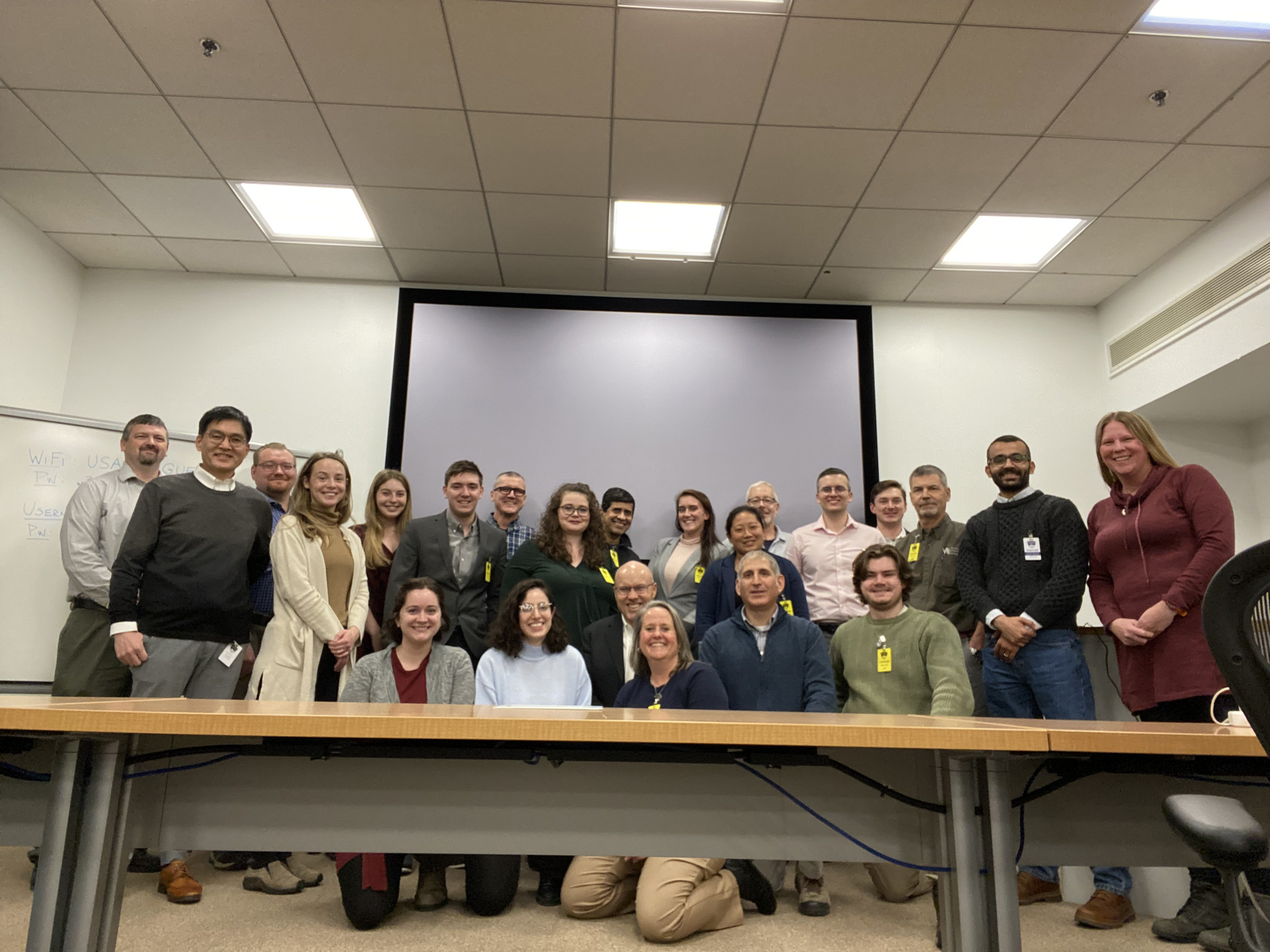
Members of ERDC’s Cold Regions Research and Engineering Laboratory gathered in Hanover for a defense resiliency program meeting. (Courtesy photo) The U.S. Army Engineer and Research Development Center’s (ERDC) Cold Regions Research and Engineering Laboratory (CRREL) recently hosted a defense resiliency program meeting in Hanover, NH, as part of a project designed to help the Army operate in the complex terrain often found in cold regions.
By geospatially mapping cold regions terrain, which is often characterized by rapid thaw and flooding in the summer and extreme cold in the winter, the project hopes to visualize the changes that are rapidly taking place as the climate warms.
To do so, the program is developing an integrated architecture — a software platform plus datasets and visualization — that integrates datasets in a structured architecture so that designers, planners and decision-makers can visualize analyses, observational data and options related to the effects of extreme cold weather on military infrastructure and operations.
According to Dr. Robyn Barbato, an ERDC-CRREL senior scientist and soil microbiologist who helped to organize the meeting, the research and development needed for the resiliency in terrain operations and infrastructure of the U.S. Army in extreme cold weather conditions currently lacks an integrated approach that combines engineering with geospatial analysis and visualization/data sciences in a unified platform.
“We find the science and engineering more single discipline-centric, rather than multidisciplinary, despite the interconnections between the different disciplines,” said Barbato. “The main objective of this research is to design and develop a science-based, multidisciplinary resiliency platform to assess the supporting infrastructure of the U.S. Army in extreme cold weather.”
Partners from academia in attendance included professors and graduate students from Virginia Tech, Stony Brook University, the University of Minnesota, Minnesota College of Art and Design, the University of North Dakota, and the National Center of Ecological Analysis and Synthesis at the University of California, Santa Barbara.
ERDC-CRREL researchers who played a pivotal role in the event include Dr. Eli Deeb, Nate Lamie, Stacey Doherty, Dragos Vas, Dr. Meg Quinn, Adam LeWinter, Lindsay Gaimaro, Elizabeth Corriveau, Dr. Chris Baker and Sam Baldwin.
This article was originally published by the U.S. Army Corps of Engineers’ Engineer Research and Development Center. For more information, visit www.erdc.usace.army.mil.